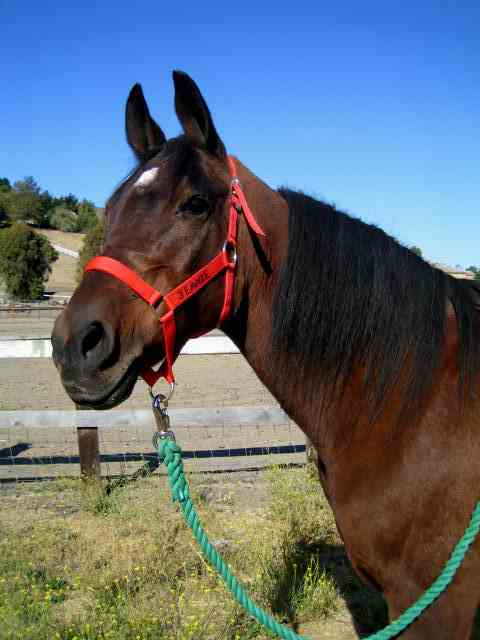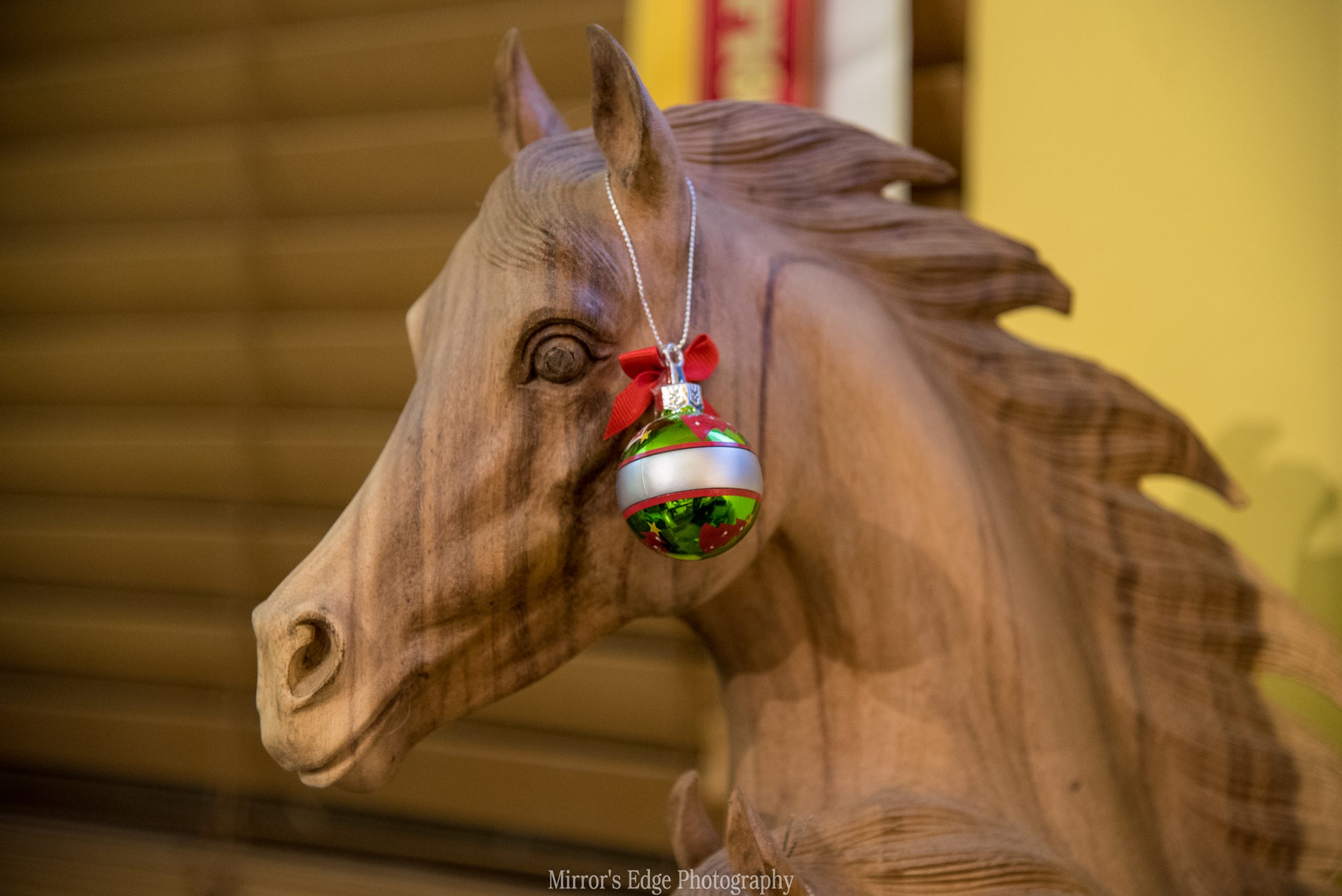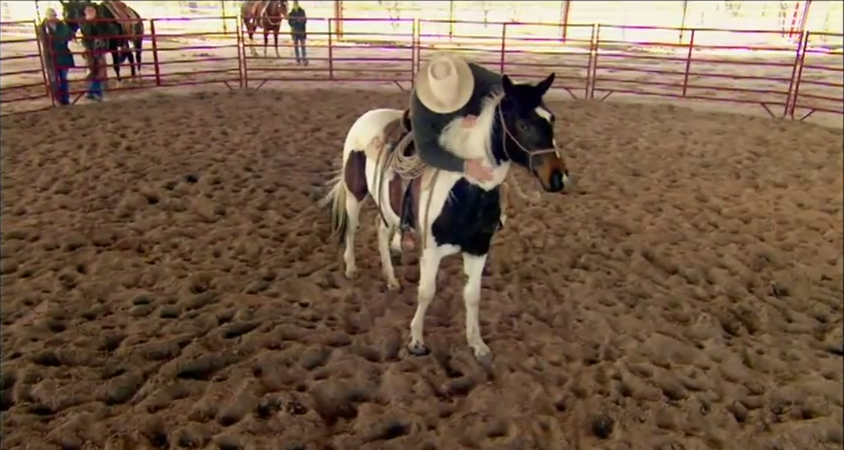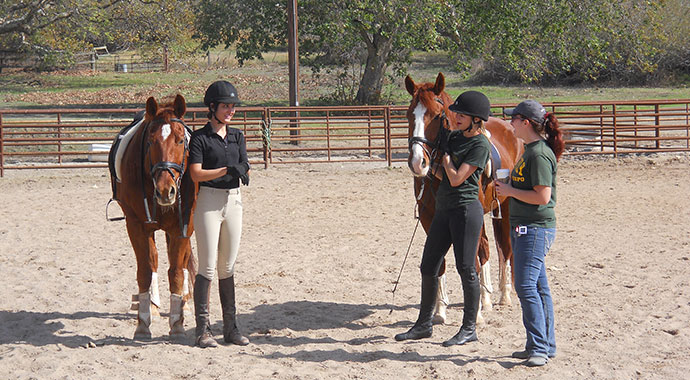One of the most difficult questions that any equestrian will ever have to answer . . . “When is it time to say goodbye to my horse?” Sometimes it’s obvious; a sudden illness or injury that cannot be treated, or the blessing of a quick passing in the night. Most times, though, the decision rests upon us as horse owners to choose when to give our equine friends the gift of a tender release.
First, I would like to talk a little about the idea of saying goodbye to your horse. With such a heavy decision, there is always guilt and second guessing. Could I have done more? Was he/she ready? But, we can’t think of it in these terms, but rather in terms of giving the final gift of ease and comfort to a soul that is burdened by the confines of a body (or mind) that no longer works as it used to.
We are charged, in this life, with the care of our equine partners, and the final act of care is the unselfish act of “letting go”. Never let anyone tell you that you have made a “bad decision” when it comes to the very personal and difficult decision to allow your equine partner to pass with dignity and comfort, because the simple fact that the decision breaks your heart is what makes it selfless and, thus, a gift.
Signs to Help us Know When it’s Time to Say Goodbye
But how do we know? As animals that thrive on movement and a “flight” mentality, when horses get to the point that their bodies no longer allow them to stand, walk, run or even move with ease, this puts a tremendous amount of strain on their psyches; they are suddenly powerless to a certain extent. Most begin “telling you” that they are nearing their time through their actions. They may begin to slow down when it comes to eating (or refuse food all together at times). You may notice your friend having difficulty getting up or laying down (in many cases refusing to lay down at all), which means that they are not able to effectively sleep – some tell-tale signs are rolling sores on the hips or the fronts of the fetlocks.
Horses who are suffering internally may display a change in weight or coat condition. Most notably, is a tendency to have a change in disposition, where as a normally quiet and “happy” horse may become “cranky” or “flighty”, or a normally “active” horse may become depressed and stand in the corner of his stall or pasture. Of course, these are all things that indicate something is wrong, but not necessarily that it is time to make the decision. These are your “signals”, and it is up to you to listen for them and to them and attempt to figure out what next step to take.
Get a Veterinarian’s Opinion
In most cases, a veterinary opinion is advised. You may have a horse who is giving you signs of discomfort, and there may indeed be a “fix” or “treatment” that will allow your friend to live happily for an extended period of time. But be ready, because just like with humans as they age, so too when horses age do veterinary tests (blood, stool, physical examination, x-rays, etc.) become more indicated. For me, it is always a comfort to go into any decision with all the facts, which means doing my best to pin-point the problems that my animals are suffering from and then weigh the prognosis and treatment with the indicated outcomes – meaning, will this treatment (that may be costly or even uncomfortable for the animal) actually improve quality of life enough to warrant putting off the inevitable?
Choose the Veterinarian
This is where choosing a good veterinarian comes into play; one who will listen to you and your concerns and will also keep an open mind to the idea of quality of life vs. quantity of life. Alamo Pintado Equine Medical Center has many fantastic veterinarians with vast and varied expertise in all forms of diagnostic medicine, as well as the ability to listen to an owner and their concerns. My personal veterinarians at Alamo Pintado are Dr. Lisa Teske and Dr. Troy Herthal – both fantastic in their fields and compassionate beyond compare. If Los Olivos is too far to travel, I have had many personal interactions with The Equine Center in San Luis Obispo, with talented and compassionate vets who would be a great help in the area of making the hard decisions.
Timing of the Decision
Once you have all of the facts, the decision is in your hands. This is something that is both very scary and very empowering. You have the ability to ease the suffering of a friend who is in need; you have the ability to allow your friend the dignity of leaving this earth and no longer suffering from whatever ails them.
The When is the Most Difficult Part of Saying Goodbye to Your Horse
The “when” is the most difficult part. I have spoken to many people who have had to make this decision (and I have had to do it as well), and in nearly all cases, the one thing I hear most is “I waited too long”. As humans, we have a tendency to want to believe that giving things “just another day” will allow for some kind of miracle…but this rarely happens. Just recently I had to say good-bye to one of the sweetest horses at the facility where I board; his owners agonized over the decision to let him go, and they did everything medically possible to attempt to return his quality of life. But, as outsiders looking in,
“we” knew that he was ready – he had started refusing to eat his medication, he needed help getting up, sometimes twice a day, and he had that “look”…he was tired.
His owners are amazing people, and they eventually made the decision to say good-bye, and now this special horse is no longer in pain; their hearts may be breaking, but they made the right decision. So, for me it comes down to “quality of life”…when the quality of my equine partner’s life is compromised beyond my control then it is time to let go.
Say Goodbye to Your Horse in Your Own Way
With the decision made, it is time for you to allow yourself the gift of saying good-bye in your own way. This may mean choosing a date and spending as much time as possible with your friend before the time comes. It means just sitting with your friend, remembering the good times, loving the fact that they came into your life and that you have done all that you can to make their life good. Don’t forget documenting your goodbye time allows you to remember. Taking pictures, washing and braiding the mane and tail are all sweet gestures to enable connection with your horse. When the time comes, keep the whole or part of your horse’s tail or mane or forelock (it may seem strange at the time, but you’ll be happy you kept a piece of that connection in the end).
Make preparations. Prepare in advance for the day. Finally, don’t feel bad if you can’t be standing right there when it happens; know that euthanasia is quick and your friend is not going to suffer, but seeing it happen may not be what you want to remember – if it isn’t, don’t feel guilty.
In the end, this is probably one of the most difficult decisions that you will ever have to make, but it is also something that can give you comfort if you remember that you are doing it for the well being of your beloved equine friend.
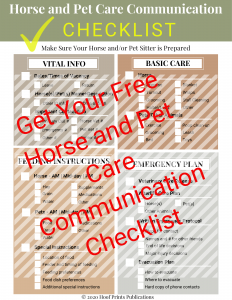
How will you communicate for your animals when you leave town? The Horse and Pet Care Communication Checklist enables you to gather all the vital information you need to communicate all the elements of all your animals’ care to your pet sitter. What if you suddenly had to leave town? Would you be ready for someone to quickly step in and take care of your animals? What if something happened to your horse or pet while you were away? Would your pet sitter know your wishes? This checklist will help you prepare your pet sitter to care for your animals the way you do. Get your Horse and Pet Care Free Checklist here >.

